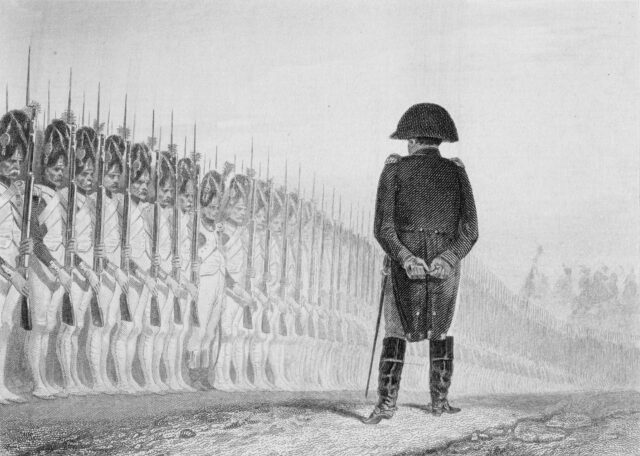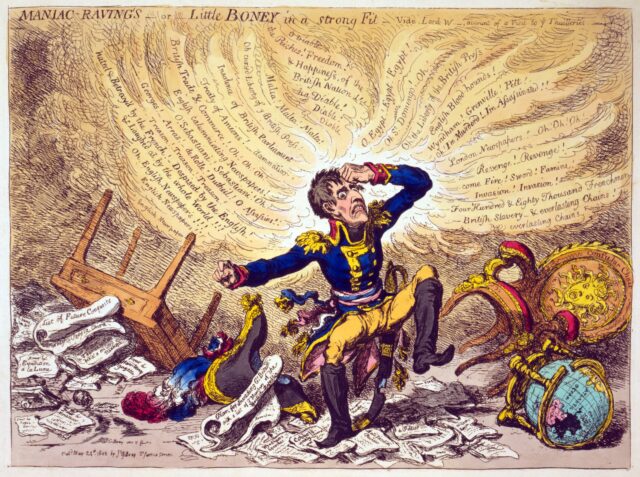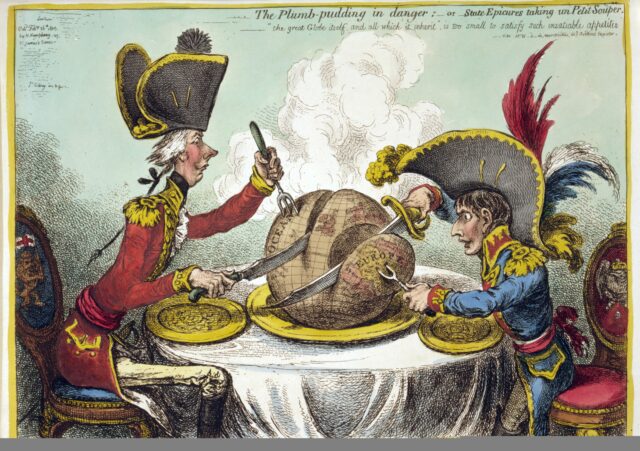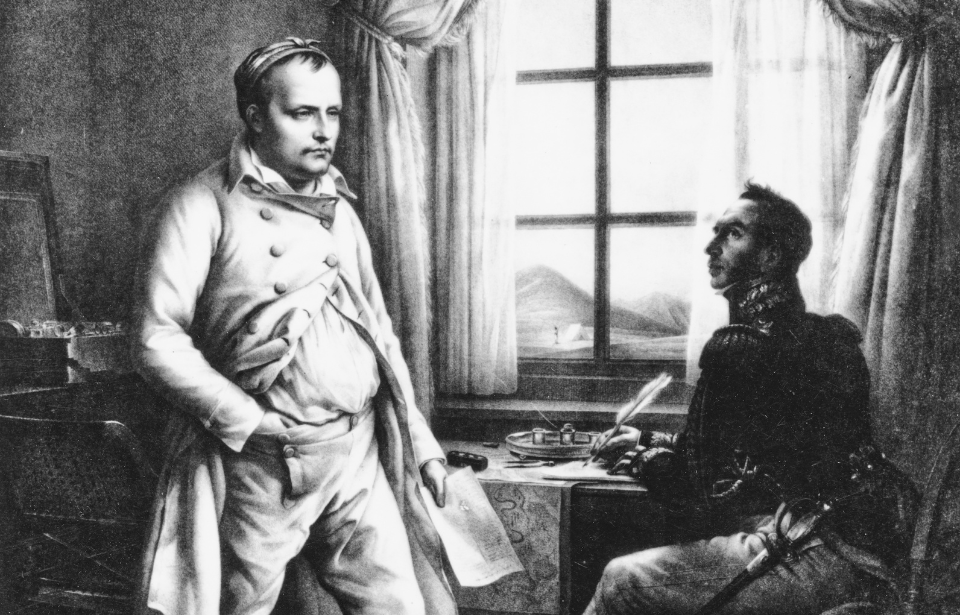Napoleon Bonaparte was responsible for the conquest of much of Europe during the early 1800s, proving his power, cunning, and might on the battlefield. However, for many, he is remembered more for his physical stature than any of his personal accomplishments. For centuries, he has been considered a small man, but just how tall was Napoleon really?
What is the Napoleon complex?
A concept that has become part of general colloquial language is the “Napoleon complex.” Named for the French military and political leader who conquered much of Europe during the Napoleonic Wars of the early 19th century, the concept is closely linked to his own recorded tendencies.

The main parts of the complex are attributed to Napoleon’s height and temper. For someone, typically men, to showcase a Napoleon complex, they have to be shorter in stature than average and express a character of hostility, irritability, and aggression. This attitude is said to be a product of their perceived inferior height, used to overcompensate for an uncontrollably bruised ego.
This idea came about during Napoleon’s lifetime, when English propagandists honed in on his diminutive height to insult the powerful leader. He was often depicted as smaller than those around him, drowning in normal clothes that were oversized on his tiny stature, including boots up to his thighs and hats far too large for his head.
However, their depiction may have inaccurately portrayed the man’s true size. So, how tall was Napoleon really?
Where did the Little Corporal nickname come from?
While it may seem logical that the nickname “Le Petit Caporal” or “The Little Corporal” was derived from his height, it actually had nothing to do with that. Yes, compared to other members of the Imperial Guard Napoleon was noticeably shorter, but those men were considerably taller than the average male height.

The nickname was actually given to him as a term of affection from his soldiers following the Battle of Lodi in 1796. It came about more from his tendency to micromanage while on the battlefield. His height had not yet been publicly called diminutive, and it is likely he didn’t take offense from being referred to in this way.
James Gillray created the ‘short man’ image
The idea that Napoleon was a short man really came from one person – the English cartoonist James Gillray. In the early 1800s, Gillray introduced the Frenchman as “Little Boney,” a bratty Napoleon caricature that emphasized him having childlike temper tantrums. At first, Gillray didn’t pick on his height, but that soon changed with the publishing of “Maniac-raving’s-or-Little Boney in a strong fit” in 1803.

The image was a satire of the real Napoleon’s explosion at a diplomatic incident that occurred at the Tuileries Palace in Paris on March 14, 1803. With hundreds of European dignitaries around, Napoleon lashed out at the British ambassador Lord Whitworth.
Napoleon allegedly approached Whitworth “… with equal agitation and ferocity, proceeded to descant, in the bitterest terms, on the conduct of the English Government—summoned the Ministers of some of the Foreign Courts to be witnesses to this vituperative harangue—and concluded by expressions of the most angry and menacing hostility.” It only ended when Napoleon himself left the room, “… leaving nearly two hundred spectators of this wanton display of arrogant impropriety, in amazement and consternation.”
In the cartoon, Gillray depicted Napoleon as a tiny military leader, swimming in his clothes and surrounded by furniture much larger than him. Pictured around him are manic thoughts about Britain as he tears at his hair in rage.
Napoleon continued to be depicted as a tiny dictator in English propaganda
Depicting Napoleon as a tiny man became the norm for English propaganda. Gillray went on to publish many more cartoons with the wee dictator. “The Plumb-pudding in danger, or, State epicures taking un petit souper,” which was drawn by Gillray in 1805, has been described as arguably the most famous political cartoon of all time.

In the image, Napoleon sits at a table with British Prime Minister William Pitt the Younger, at just half his height. The two are slicing the world into spheres of influence, and where Pitt uses a knife, Napoleon uses a sword. Pitt’s portion of the world is far larger, but the portion Napoleon does take includes Europe, meaning he would take it (except for Britain and Ireland) easily.
Gillray’s “Tiddy-Doll, the Great French-Gingerbread-Baker; Drawing Out a New Batch of Kings” from 1806 shows Napoleon as a tiny baker baking up some small kings, alluding to his tendency to appoint family and friends in positions of power. Meanwhile, in the background, the French Foreign Minister Talleyrand kneads some dough labeled Poland, Turkey, and Hungary.
While the caricature makes fun of his height and refers to him as doll-like, it also recognizes the undeniable power that Napoleon had at the time.
The caricatures of his height struck a cord
If Gillray was trying to undermine the significant conquest of the Frenchman by pushing this idea that his physical stature was laughable, it worked. Shortly after these caricatures were released to the public and Napoleon himself caught wind, he demanded that the British government intervene and censor this imagery of him.

Naturally, the British ministers ignored his request, and many more caricatures continued to play on his allegedly small stature. The idea became so widespread and popular that other cartoonists even began to adopt the joke in their own illustrations.
Napoleon was not blind to the effect this rumor was having on his reputation. Near the end of his life, he even admitted that Gillray’s work “did more than all the armies of Europe to bring me down.”
So, just how tall was Napoleon?
There are different contemporary sources that help give a better clue as to Napoleon’s true height. In 1815, an Englishman described him as “a remarkably strong, well-built man, about five feet seven inches high.” However, sources closer to him, like his personal physician and his valet, said that his height was closer to five foot five inches.

While it is hard to say exactly how tall Napoleon was, the death certificate following his demise in 1821 certainly didn’t clear anything up. The physician’s report said that he was a mere five feet two inches measured “from the top of the head to the heels.”
It is important to take into account that the French measurement system in place back then differs from the current day metric system. What they measured as an inch was 2.71 centimeters, while the British equivalent of an inch is 2.54 centimeters. If sources say Napoleon was five feet two inches, converting that to modern measurements would put him closer to five feet seven inches.
More from us: Napoleon’s Amputated Member Has Had a Bizarre Afterlife
If that was the case, then Napoleon measured in at or just below average height for French men of the time. Gillray’s effort to diminish his height worked better than he probably would’ve imagined, as Napoleon is still remembered by many as a stout man with a short temper.
